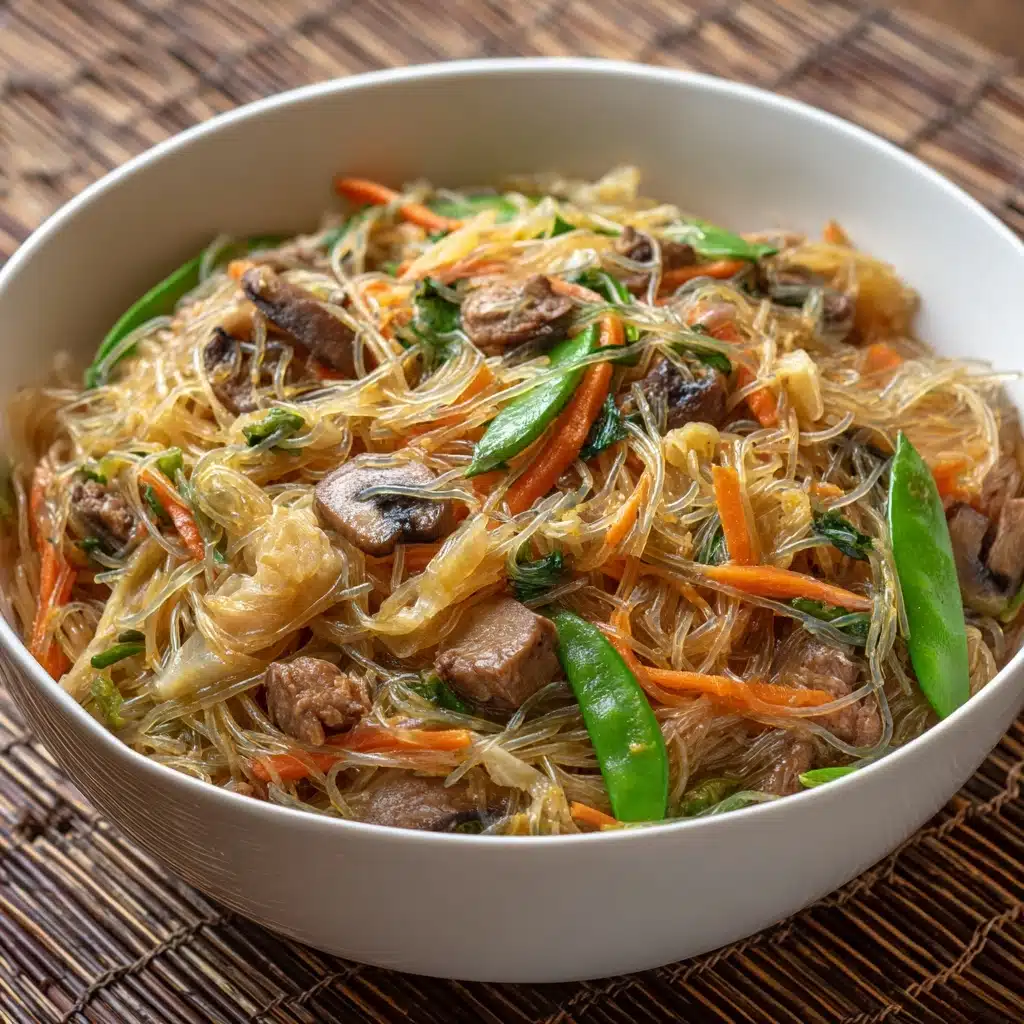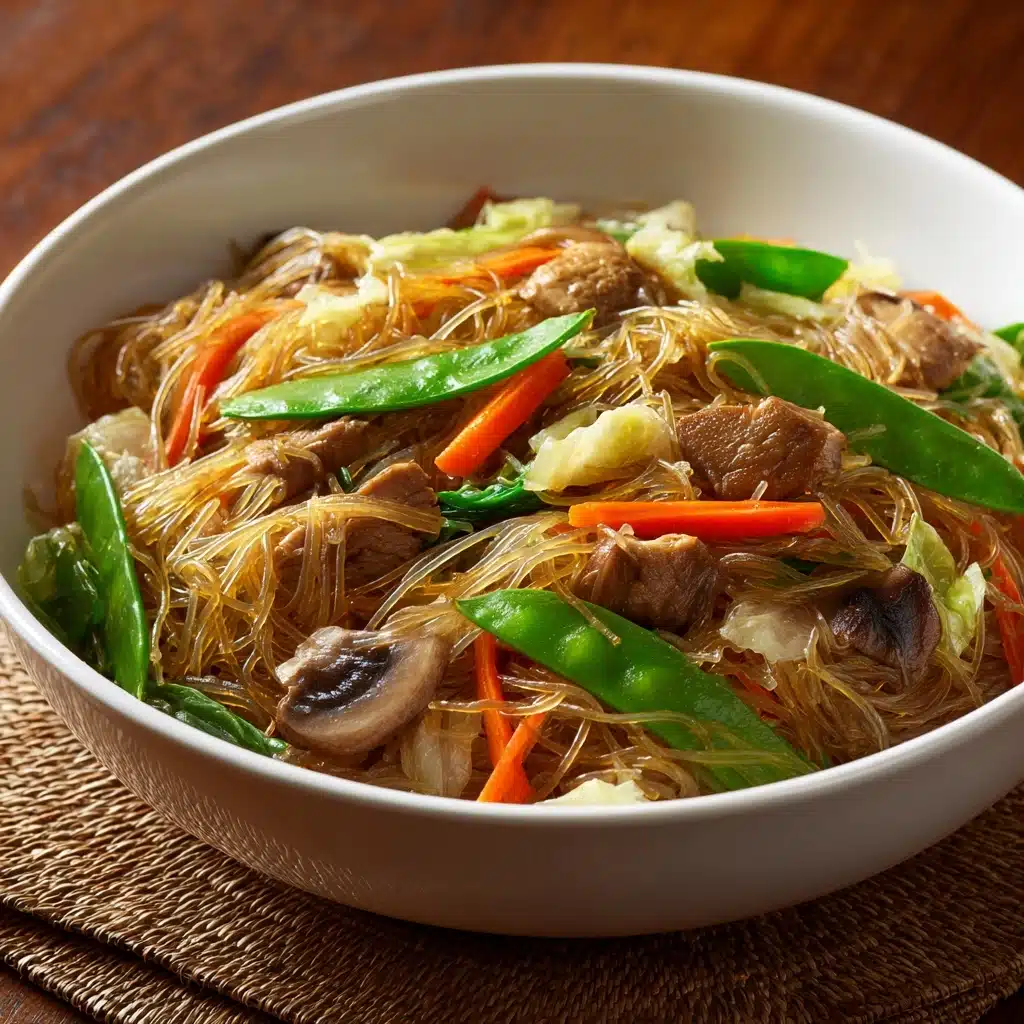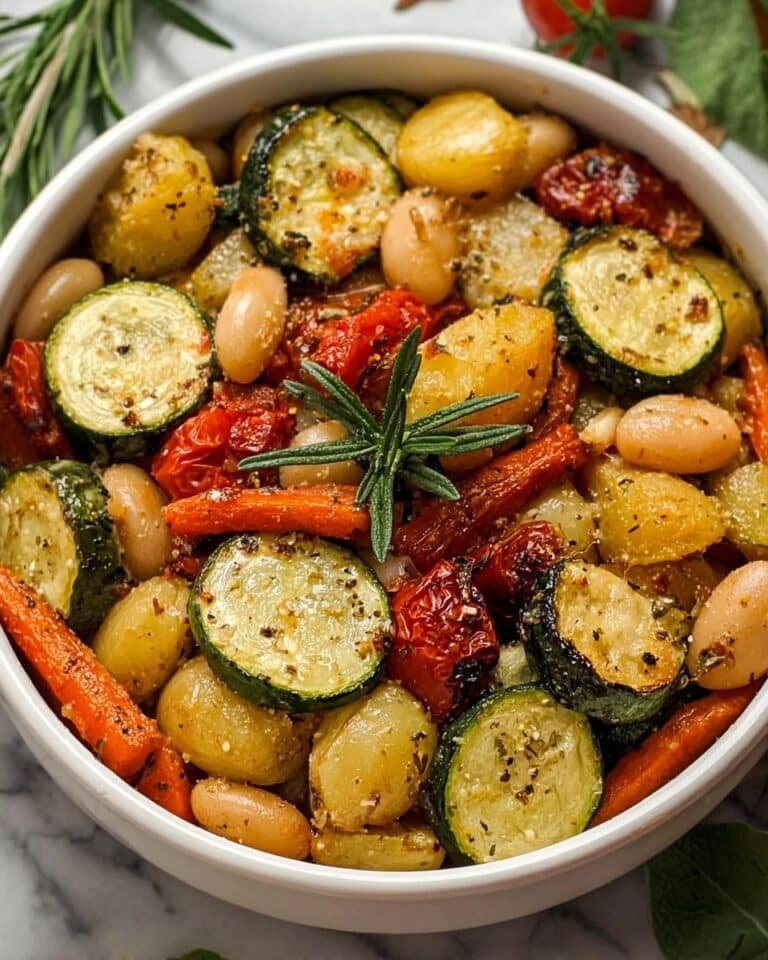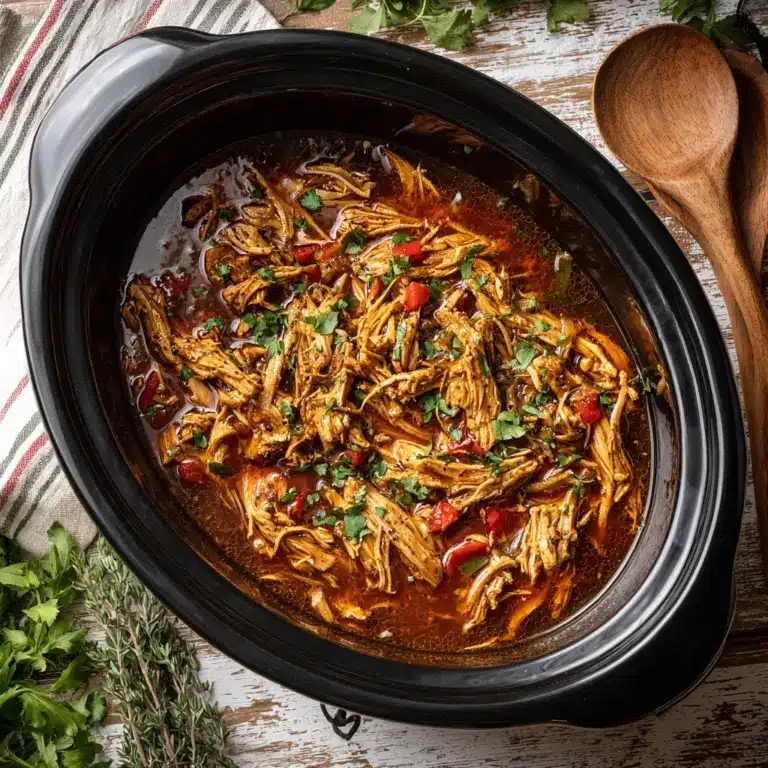Classic Pancit Bihon with Very Tender Meat Recipe
If you’re craving a comforting, flavorful noodle dish that’s bursting with color and texture, look no further than this Classic Pancit Bihon with Very Tender Meat. This beloved Filipino staple brings together delicate rice noodles infused with a savory blend of soy and oyster sauces, vibrant fresh vegetables, and the star of the show: incredibly tender, perfectly seasoned pork and chicken morsels. Every bite delivers that wonderful harmony of soft noodles, crisp veggies, and melt-in-your-mouth meat that keeps you coming back for more. It’s a dish that’s as joyful to cook as it is to enjoy with family and friends.

Ingredients You’ll Need
Gathering a handful of simple ingredients is all it takes to create a dish that’s rich in flavor and texture. Each component plays an essential role, from the slightly chewy bihon noodles to the variety of crunchy vegetables that add freshness and color, not to mention the tender meat that makes this pancit truly special.
- ½ lb Pork Shoulder: Trimmed of fat and cut into small bite-sized pieces, this provides rich, juicy meat perfect for pancit.
- ½ lb Chicken Breast: Also cut into small pieces to ensure even cooking and tenderness alongside the pork.
- 2 tsp Baking Soda: Used for dusting the meat to tenderize it beautifully before cooking.
- 2 tbsp Neutral Oil: Ideal for searing the meat and sautéing the aromatics without overpowering flavors.
- 8 oz Rice Stick Noodles (Bihon): The star noodles that soak up all the savory goodness while staying light and delicate.
- 2-3 Cloves Garlic: Minced and sautéed to fill the dish with an irresistible aroma and depth.
- ½ Large Yellow Onion: Sliced into long strips to add a slightly sweet crunch throughout the dish.
- 1 Small Carrot: Julienne-cut for a pop of sweetness and crunch.
- 2 Celery Stems: Cut about a quarter inch thick, adding a subtle refreshing crispness.
- ¾ Cup Snow Peas: Trimmed ends for that perfect burst of green and vibrant snap.
- ¾ Cup Green Cabbage: Sliced into long strips to contribute gentle texture and color.
- Ground Black Pepper: To taste; adds a gentle hint of spice that rounds out the dish.
- Sauce Mix: Combines ¾ cup chicken broth, 2½ tbsp soy sauce, and 1 tbsp oyster sauce for deep and savory flavor.
- Garnish: Lemon or calamansi wedges and thinly sliced green scallions to brighten and finish the plate.
How to Make Classic Pancit Bihon with Very Tender Meat
Step 1: Tenderize the Meat
Start by cutting both the pork shoulder and chicken breast into small, bite-sized pieces to ensure they cook evenly and are easy to enjoy in every mouthful. Lightly dust the meat with baking soda, which is a secret weapon in Filipino cooking to achieve extraordinary tenderness. Pop the meat into the refrigerator for 20 to 25 minutes so the baking soda can work its magic. When time’s up, rinse the meat thoroughly under cold water to wash away excess baking soda, then pat dry with paper towels. Setting the meat aside like this prepares it perfectly for the next flavorful steps.
Step 2: Prepare the Sauce Mix
While the meat is resting, whisk together the chicken broth, soy sauce, and oyster sauce in a small bowl. This combination forms the luscious sauce base that will soak into the rice noodles, infusing them with that unmistakable savory depth classic to pancit bihon. Having this ready means the cooking flow stays smooth and efficient.
Step 3: Sear the Meat and Sauté Aromatics
Heat your pan or wok until it’s very hot, then add the neutral oil. Lay out the tenderized meat pieces, letting them sear undisturbed for about a minute to develop a lovely caramelized surface. Next, clear some space in the pan and toss in the minced garlic. Arrange the onion strips artfully around the pan’s edges, allowing their sweetness to slowly release. Give everything a gentle toss once the meat has a nice sear; this helps build a flavorful base that is both aromatic and hearty.
Step 4: Add Sauce and Noodles
Pour in your prepared sauce mix, bringing it to a gentle simmer. Then, add the bihon noodles, laying them flat so they can absorb the liquid evenly. After a few minutes, flip the noodles carefully with tongs to ensure they soak up all the savory sauce. The noodles will begin to soften and swell, embracing the rich flavors fully—this is when your kitchen starts smelling absolutely amazing.
Step 5: Incorporate Vegetables and Finish Cooking
Once the noodles are beginning to soften, add the carrot juliennes and celery pieces, then cover the pan with a lid. This steaming step helps the vegetables cook just right, keeping them crisp yet tender. Remove the lid, toss the noodles to distribute everything evenly, and sprinkle ground black pepper to taste. Continue tossing until the noodles look translucent and bouncy. If they start to stick, add a tablespoon of broth to loosen things up. Toss in the snow peas and cabbage last—these quick cooks maintain their bright color and crunch. Once the noodles have absorbed all the sauce and are perfectly tender, your Classic Pancit Bihon with Very Tender Meat is ready to come off the heat.
Step 6: Garnish and Serve
Finally, scatter thinly sliced green scallions across the top for a fresh bite and sprinkle of color. Serve with lemon or calamansi wedges on the side to squeeze over the dish, adding a bright citrus contrast that elevates every delicious forkful. Now you have an irresistible, hearty pancit that’s ready to light up any meal.
How to Serve Classic Pancit Bihon with Very Tender Meat

Garnishes
Adding garnishes to your Classic Pancit Bihon with Very Tender Meat is key for that final pop of freshness. Thinly sliced scallions bring a mild onion bite and vibrant green hues, while lemon or calamansi wedges offer a lively brightness that cuts through the savory richness. These small touches really make the dish sing and encourage everyone at the table to customize their flavor.
Side Dishes
This pancit bihon is a satisfying meal on its own but pairs wonderfully with simple Filipino sides like lumpia (spring rolls) or a fresh green salad with a tangy vinaigrette. Pickled vegetables or atchara (pickled papaya) also complement the noodles with their sweet and sour zing, creating a balanced and festive spread that’s perfect for family gatherings or casual dinners.
Creative Ways to Present
Want to impress your guests? Serve the Classic Pancit Bihon with Very Tender Meat in individual banana leaf-lined plates for a colorful, authentic touch that’s both charming and aromatic. Alternatively, mound the noodles into a decorative pyramid shape and garnish with edible flowers or microgreens for a fresh, elegant presentation. These little details turn a humble pancit into a showstopper worthy of celebrations.
Make Ahead and Storage
Storing Leftovers
Leftover Classic Pancit Bihon with Very Tender Meat keeps well in an airtight container in the refrigerator for up to three days. To keep the noodles from drying out, it’s helpful to add a splash of broth or water before storing. When refrigerated properly, the flavors meld beautifully, making the next day’s meal even tastier.
Freezing
While freezing pancit bihon is possible, it can sometimes affect the texture of the noodles and vegetables. If you choose to freeze your leftovers, place the pancit in a sealed freezer-safe container and consume within one month. Thaw in the refrigerator overnight before reheating to help preserve the dish’s tenderness and flavor as much as possible.
Reheating
Reheat your pancit gently over medium heat in a skillet or wok, adding a splash of broth or water to prevent sticking and revive the noodles’ softness. Stir frequently until warmed through, making sure the meat stays juicy and the vegetables maintain their crunch. Avoid microwaving if possible, as it tends to dry out the noodles unevenly.
FAQs
Can I make Classic Pancit Bihon with Very Tender Meat vegetarian?
Absolutely! Swap the pork and chicken for tofu or mushrooms and increase the vegetables to keep it hearty. Use vegetable broth in place of chicken broth and soy sauce as is. The key is tenderizing the substitute protein and following the same steps to get that wonderful pancit flavor.
Why use baking soda on the meat?
Baking soda helps break down the proteins in the meat, making it much more tender and juicy once cooked. It’s a simple step that transforms tougher cuts like pork shoulder into melt-in-your-mouth morsels perfect for pancit bihon.
What is the best noodle to use for pancit bihon?
The ideal noodles are thin rice stick noodles, often labeled as bihon or rice vermicelli. They’re delicate, absorb sauces beautifully, and provide the classic texture that makes this dish so beloved.
Can I prepare this dish ahead of time for a party?
Yes! You can prepare the sauce and chop vegetables in advance, as well as tenderize the meat. Cook pancit bihon fresh on the event day for best texture and flavor, or warm leftovers gently if prepared day before.
Is it okay if my noodles stick together after cooking?
Some sticking is normal with rice noodles, but tossing them with a little oil right after cooking and occasionally while cooking can help. Also, adding broth when stirring keeps noodles moist and separate for that perfect pancit bihon bite.
Final Thoughts
This Classic Pancit Bihon with Very Tender Meat is one of those dishes that truly brings people to the table with smiles and second servings. It’s simple yet special; comforting but exciting with every bite. Once you try making this dish, you’ll find it hard not to share it over and over with the people you care about. Trust me, it’s a beautiful way to celebrate good food and great company!
PrintClassic Pancit Bihon with Very Tender Meat Recipe
Classic Pancit Bihon with very tender pork shoulder and chicken breast meat, perfectly cooked rice stick noodles, and fresh vegetables, all tossed in a savory soy and oyster sauce blend. This Filipino favorite is enhanced by a simple tenderizing method using baking soda for irresistibly soft meat.
- Prep Time: 30 minutes
- Cook Time: 15 minutes
- Total Time: 45 minutes
- Yield: 4 servings 1x
- Category: Main Dish
- Method: Sautéing and Stir-frying
- Cuisine: Filipino
- Diet: Halal
Ingredients
Meat and Tenderizing
- ½ lb Pork Shoulder, trimmed of fat and cut into small bite-size pieces
- ½ lb Chicken Breast, one medium breast cut into small bite-size pieces
- 2 tsp Baking Soda, dusting to tenderize meat
Vegetables
- 2–3 cloves Garlic, minced
- ½ large Yellow Onion, cut into long strips about 2–3 inches
- 1 small Carrot, julienned
- 2 Celery Stems, cut about ¼ inch thick, straight or diagonal
- ¾ cup Snow Peas, ends trimmed
- ¾ cup Green Cabbage, sliced into long 3 inch strips
Noodles and Sauce
- 8 oz Rice Stick Noodles (bihon rice noodles)
- ¾ cup Chicken Broth
- 2½ tbsp Soy Sauce
- 1 tbsp Oyster Sauce
- 2 tbsp Neutral Oil (such as vegetable or canola oil)
- Ground Black Pepper, to taste
Garnish
- Lemons or Calamansi Wedges
- Green Scallions, thinly sliced
Instructions
- Tenderize the Meat: Cut pork shoulder and chicken breast into small, bite-sized pieces. Dust evenly with baking soda to tenderize the meat. Refrigerate for 20-25 minutes.
- Rinse and Dry Meat: Remove meat from refrigerator and rinse thoroughly under cold water using a strainer to wash off baking soda. Pat meat dry completely with paper towels and set aside.
- Prepare Sauce Mix: In a small bowl, combine chicken broth, soy sauce, and oyster sauce. Set aside this flavorful sauce mixture.
- Heat Oil and Sear Meat: Heat pan or wok over high heat, then add neutral oil. Place meat pieces in the pan to sear without moving them for about a minute to develop a golden crust.
- Add Aromatics: Create some space and add minced garlic to the pan. Arrange onion strips along the sides and in gaps among the meat. Start tossing once meat is nicely seared.
- Add Sauce and Noodles: Pour sauce mix into the pan and allow it to simmer. Add rice stick noodles and after a few minutes, flip noodles gently to incorporate them into the sauce.
- Cook and Toss Noodles: Toss noodles as they soften, then add julienned carrots and celery. Cover pan with a lid to steam and cook the vegetables briefly.
- Finish Cooking Vegetables and Noodles: Remove lid and toss noodles again to absorb more sauce. Season with ground black pepper. Toss until noodles are bouncy, translucent, and have absorbed most of the liquid; add a tablespoon of broth if needed.
- Add Snow Peas and Cabbage: Mix in snow peas and sliced green cabbage. Continue tossing and taste to ensure noodles are fully softened and see-through.
- Garnish and Serve: Turn off heat. Garnish with thinly sliced green scallions. Serve hot with lemon or calamansi wedges for squeezing over the top. Enjoy your classic Pancit Bihon!
Notes
- To get very tender meat, ensure you do not skip the baking soda tenderizing step.
- Rinse off baking soda thoroughly to avoid an off taste in the dish.
- Use neutral oil with a high smoke point for searing the meat to prevent burning.
- Adjust seasoning with soy sauce or pepper to your taste preference.
- Feel free to substitute chicken broth with vegetable broth for a lighter flavor.
- Serve immediately for best texture; reheated noodles may become soggy.
Nutrition
- Serving Size: 1 serving (approx. 1 cup)
- Calories: 350 kcal
- Sugar: 3 g
- Sodium: 700 mg
- Fat: 12 g
- Saturated Fat: 3 g
- Unsaturated Fat: 7 g
- Trans Fat: 0 g
- Carbohydrates: 40 g
- Fiber: 3 g
- Protein: 25 g
- Cholesterol: 70 mg
Keywords: Pancit Bihon, Classic Filipino Noodles, Tender Meat, Pork and Chicken Pancit, Easy Pancit Recipe








